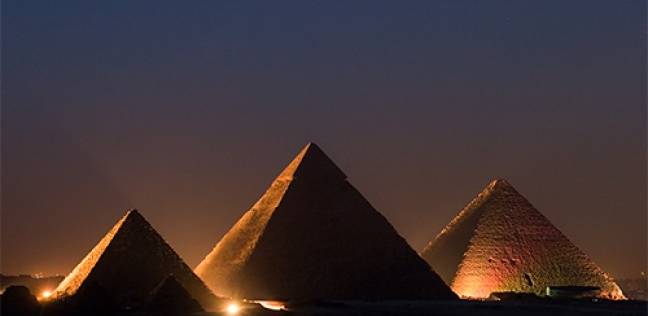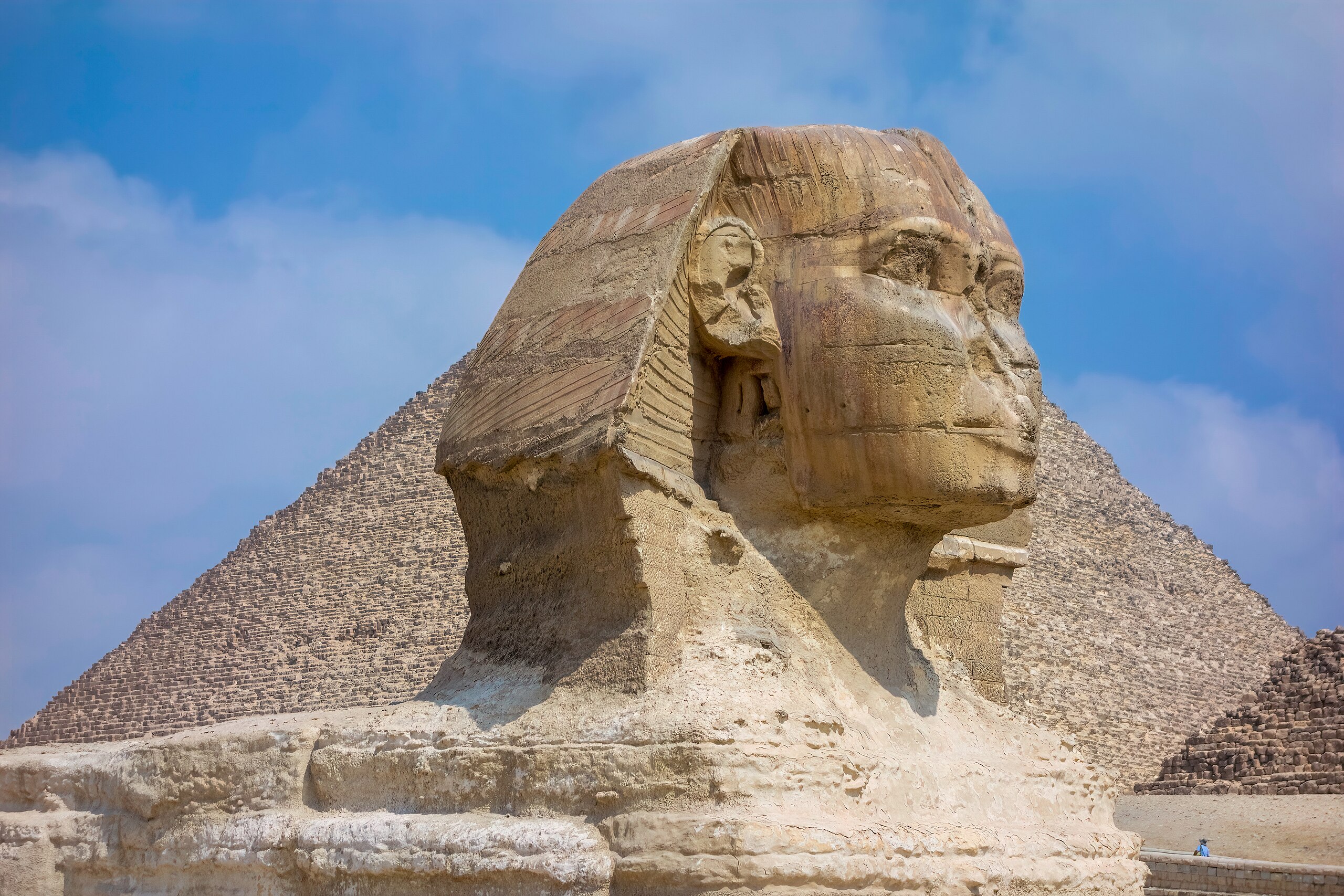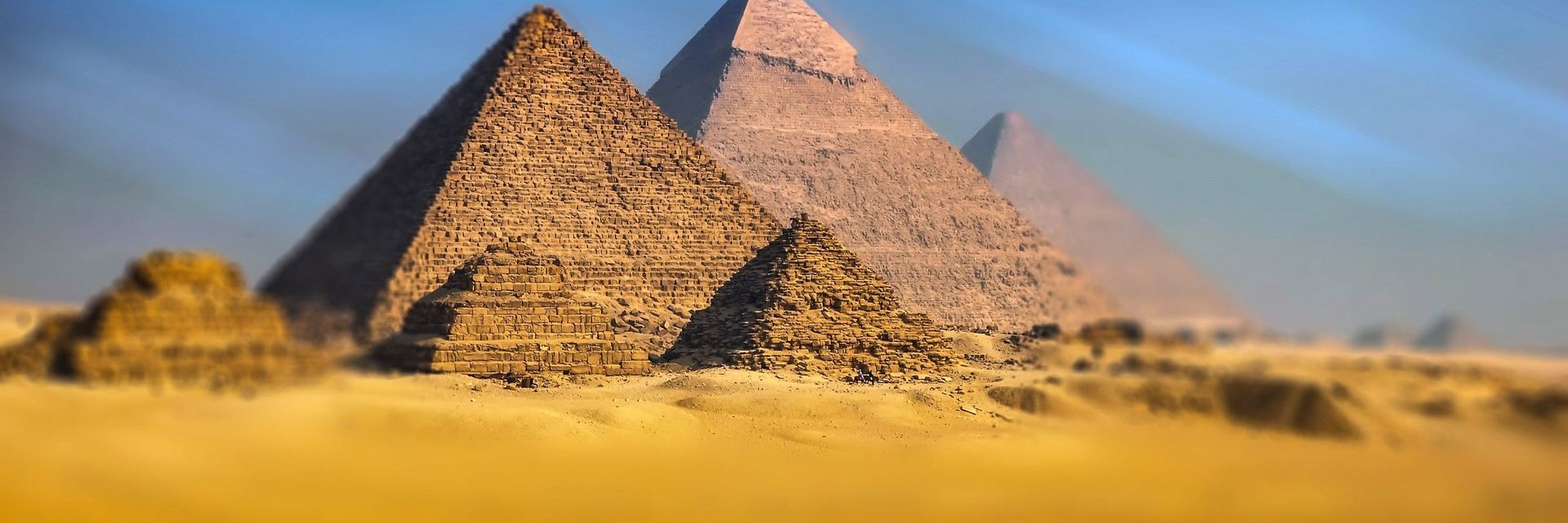Ancient Egypt’s architectural and engineering accomplishments continue to amaze (and confound) historians. From the towering Pyramid of Giza, to iconic sculptures of sphinxes and gods, the Egyptians were undoubtable masters of craftsmanship. Here, we examine what we know about these creations and debunk some of the misconceptions that surround them.
◊
The civilization known as Ancient Egypt originated around 3,500 BCE, and was conquered by Alexander the Great in 332 BCE. In the millennia between, the Egyptians made vast strides in almost every area of culture and science. Their influence played a major role in Greek and Roman civilizations, which later inspired modern Western civilization – so if you look, you can feel their legacy reverberating through the modern world.
Despite our desire to understand the ancient Egyptian civilization, there is a mystery at the heart of their mastery of architecture and engineering – a mystery with an answer that lies buried along with the pharaohs. Their incredible technological acuity indicates that the ancients knew something we have since forgotten. Let’s examine some of the ancients’ most notable feats, which might shed some light on the mysteries of our own civilization.
Engineering Miracles of Ancient Egypt: Pyramid Fever
What comes to mind when you think of ancient Egypt? Most likely, it’s the pyramids – those towering sculptures that rise up from the desert and signify so much of what human civilizations hold dear.
Egypt’s first pyramid is known as the Step Pyramid. It was built in honor of a pharaoh named Djoser (sometimes spelled Zoser), who ruled during Egypt’s third dynasty. Like most pyramids, it is first and foremost a tomb, designed to provide the souls of its occupants with the most opulent afterlife possible.
.jpg)
Source: Bernard DuPont, via Wikimedia Creative Commons
“The pyramids are there as mountains of stone proving the otherworldly nature of their god-kings. You stand in front of those pyramids and you feel it’s impossible to build such a thing…[That means] the propaganda is still working.” —Kara Cooney, Professor of Ancient Egyptian Architecture, UCLA
Historians believe that the Step Pyramid was designed by an architect named Imhotep, who played an important role in the development of modern writing and is also known as the patron saint of modern physicians. The pyramid began as a mastaba tomb – a structure with a flat roof and sloped sides. Constructed using 11.6 million cubic feet of stone and clay, the pyramid stands on top of 3.5 miles of mysterious tunnels. The complex contains countless rooms, as well as several courts, altars, and an underground palace, presumably designed so the ruler could live out his afterlife in style. The king’s sarcophagus lies at the very bottom of the subterranean labyrinth of passageways, many of which lead to false doors or branch off to additional clusters of tunnels.
After the Step Pyramid's completion, construction of similar structures took off. In Egypt’s Fourth Dynasty (2680-2560 BCE), the more familiar smooth-sided pyramid form was developed. Eventually, this would lead to the construction of the greatest pyramid of all.
The Great Pyramid of Giza: Egypt’s Crown Jewel
In the heart of the city of El Giza stands the Giza Pyramid Complex, also known as the Necropolis. This architectural marvel contains three pyramids: the Pyramid of Khafre, the Pyramid of Menkaure, and of course, the Great Pyramid of Giza. Though each was created for a different pharaoh, many historians are convinced that their collective design is cohesive and intentional, as the arrangement of these structures is possibly a representation of the Orion constellation. (This isn’t the only way that these pyramids have been linked to the cosmos, but we’ll get to that later).
The Pyramid of Menkaure is the smallest and newest of the three. Built around 2,490 BCE, it stands 61.1 meters tall and 108.5 meters wide, and its main feature is its complicated mortuary temple. The Pyramid of Khafre is the second largest pyramid in ancient Egypt, standing around 136.4 meters tall and 215.5 meters wide. Built around 2,540 BCE, it contains a network of funerary chambers and is made of blocks weighing two tons each.

Source: Amrkhaled 2003, via Wikimedia Creative Commons
The Complex’s crown jewel is the Great Pyramid. Most believe that it was erected under the watchful eye of the pharaoh Khufu, also known as Cheops, to be a tomb where the king would complete his transformation into a god in the afterlife. Today, it is a mind-blowing structure even if you know nothing about its technological mysteries. Standing 146.7 meters high and stretching 234.4 meters wide, it looms above everything around it. The Egyptians assembled it from 2.5 million stone blocks, some of which came from over 500 miles away, which is particularly amazing when you consider that they didn’t have the use of wheels at the time – and that construction took only 20 years!
“Know thyself deathless and able to know all things, all arts, sciences, the way of every life. Become higher than the highest height and lower than the lowest depth. Amass in thyself all senses of animals, fire, water, dryness and moistness. Think of thyself in all places at the same time, earth, sea, sky, not yet born, in the womb, young, old, dead, and in the after death state.” —Muata Ashby, Ancient Egyptian proverb
Whoever designed and built the pyramids had incredibly detailed knowledge and architectural skill. When completed, the pyramid towered over the city, and its corners aligned almost exactly with the points of a compass. In general, Egyptians often oriented structures to true north quite precisely, likely using stars such as Polaris to orient their work, and the Great Pyramid is no exception.
How the Pyramids Were Made: Ropes, Canals, and...Aliens?
The origins and composition of the Great Pyramid, our oldest wonder of the world (and its slightly less famous kin), have long confounded scholars. How did engineers manage to achieve the seemingly impossible feats that building these masterpieces would require?
Well, the truth is that nobody knows for sure. While some believe that construction workers may have used large ramps to transport the stones, this theory has been largely disproven, as there is little archeological evidence to support the claim.
Naturally, “New Age” explanations are abundant, with the most extreme theories arguing that aliens must have constructed the pyramid. It’s true that it would’ve been difficult for humans to build the pyramids, and there is precious little historical evidence of how they were built. Citing this lacuna, as well as the architectural and scientific questions that surround the pyramids, many superstitious people have proposed that aliens came to Earth in ancient times and helped kick-start civilizations.
“The Great Pyramid has lent its name as a sort of by-word for paradoxes; and, as moths to a candle, so are theorisers attracted to it.” —Flinders Pietrie, The Pyramids and Temples of Gizeh,1883
According to these superstitions, the aliens were instrumental in helping ancient Egyptians build their masterpieces. Believers argue that in order to design the pyramids as they are, one would need a bird’s eye view – the kind that could be provided from, say, a flying saucer. They also believe that in order to create an object that obeys the so-called Golden Ratio, a mathematical relationship based on the special number Phi, the Egyptians would have needed help from outside sources.
The alien theory has persisted to present day. In 2001, Russian scientist Dr. Viktor Ivanovich claimed that the KGB had found ancient alien remains inside the Great Pyramid. This idea has also appeared in many forms in pop culture, with shows like X-Files promoting the idea that architects and historians have been hiding evidence of alien activity for hundreds of years.
Certainly, the Great Pyramid’s inner network of shafts, passageways, and chambers is so intricate that it’s not hard to understand why people believed that some kind of divinity or super-intelligence was involved. On the other hand, there is extensive evidence that explains both how and why the ancient Egyptians built the pyramids.
While we don’t know the exact details of how they were built, we do know for sure that the pyramids were constructed by skilled Egyptian craftsmen who lived in nearby compounds during the project. Today, most scholars believe that the pyramid stones were lifted from nearby quarries, and put in place with some kind of rudimentary pulley system. There is also some evidence that the stones were transported along the Nile River on boats via a canal system. Even though the pyramids’ construction appears to be miraculous, they were definitely made by human hands.
Like time capsules, the pyramids are physical symbols of ancient wisdom. Made of glittering golden limestone, and always remaining around a cool 20 degrees centigrade inside, they provide glimpses of an ancient society that once neared the kind of technological intelligence we possess today. Perhaps in two thousand years, historians will speculate about the extraterrestrial origins of our fallen civilization – though it’s more likely they’ll wonder at how and why we created so many cell phones in such a short time.
Marvel of Art and Science: The Sphinx
The Ancient Egyptians may have been quite good with rocks and stones, but at heart, they were artists, perpetually working to recreate the images of myths, kings, and gods. Of all their marvelous sculptural works, their most famous might be the Sphinx.
Like its pyramid counterparts, the Great Sphinx of Giza is one of the largest and most mysterious ancient structures in the world. At 240 feet long and 66 meters wide, the sphinx crouches on its forearms and haunches but looks ready to spring into action at any moment. It is often seen as a statue of solar worship, because it faces due East and because the lion is a symbol traditionally associated with the sun.
No one knows for sure who created this grand hybrid creature, but historians suspect that it was erected in honor of Pharaoh Khafre – the son of Khufu (who was responsible for constructing the Great Pyramid of Giza), though there isn’t much evidence to support even this claim.
We do know that, unlike the pyramids, the Sphinx was not constructed from many different pieces. It was carved from a single block of limestone, which remains a miraculous feat in itself. Naturally, some people have outlandishly proposed that aliens had a hand in creating the Sphinx, too, going as far as citing similarities between the Sphinx’s visage and a humanoid “face” that appeared in a satellite photo of Mars.
Today, the enormous (and definitively manmade) statue still stands even after extensive vandalism and weathering, including thousands of years of having been buried almost entirely under the sand until it was dug up in the 1930s.
The Great Sphinx is Egypt’s most famous tribute to this sacred feline creature, but archaeologists have unearthed thousands of sphinx statues over the years. Some other famous ones include the alabaster sphinx of Memphis, now part of an open-air museum, and the ram-headed sphinxes of Thebes, of which there were originally about 900.
The sphinx appears across Egyptian, Asian, and Greek mythology, and it’s always a creature with the body of a lion and the head of a human. Sphinx statues were typically placed in front of pyramids, as it was believed that these creatures would guard the spirits of the dead.

Source: Petar Miloševi?, via Wikimedia Commons
From Measurement to Hieroglyphs: Other Technologies of Ancient Egypt
Whether or not they were blessed by alien visitors, the ancient Egyptians have provided us with some of the most important technologies humans have created. They developed modern writing technologies, including ink made of a brew of gum, soot, and beeswax; and they used the ink to write on the first paper on record, papyrus, which is crafted from the pith of the Cyperus papyrus plant. Putting their paper and ink to good use, they developed an intricate lettering system that used some 1,000 characters. The hieroglyphs survived and eventually evolved into the Phoenician alphabet, the oldest alphabetical lettering system on record. They also made strides in agriculture, inventing highly advanced cutting tools and pioneering the first iterations of technologies like the ox-drawn plow and the sickle around 4,000 BCE.
Arguably, the ancient Egyptians set the stage for the hyper-advanced civilization we live in now, where we measure the grandeur of civilizations by their tallest buildings and their rapid technological growth. Unlike us, though, the Egyptians did not think they were building testaments to the living. Their work was always intended for the spirits of the dead, and if King Ramses II’s ghost is still living it up in his giant tomb in the Valley of the Kings, maybe he’s laughing at our fragile modern infrastructure (here’s looking at you, NYC subways), confident that his civilization’s legacy will outlast the ravages of time.
As the ancient Arabic proverb says, “Man fears time, time fears the pyramids.”
Ω
Title image: Panoramic view of the pyramids of Giza by Walkerssk via Wikimedia Commons.

